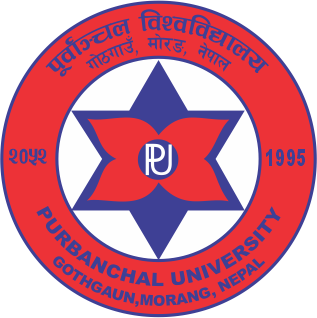Nutritional Status among Elderly People of Biratnagar, Nepal
Keywords:
Aged, Humans, Nutritional Status, NepalAbstract
Introduction: Globally, the population of older adults is growing. According to the World Health Organization, there will be 1.2 billion older people worldwide by 2025; with 840 million of them living in low-income nations. Age-related health is significantly influenced by nutrition. However, nutrition is not considered as a high priority for older adults and many older adults are forced to live in care facilities.
Objective: The objective of this research was to evaluate nutritional status and the factors affecting to it among elderly individuals living in an aged care facility in Biratnagar, Nepal.
Method: A cross-sectional study was conducted at an aged care facility in Biratnagar from March to November 2021, involving 50 elderly residents selected through total enumeration. Data collection utilized Nestle’s Mini Nutritional Assessment tool, a general assessment questionnaire, and doctor’s prescriptions for outcome validation. Statistical analysis was performed using SPSS version 20, and ethical clearance was obtained from the Institutional Review Committee of Purbanchal University School of Health Sciences. Descriptive and inferential statistics were employed for data analysis.
Result: Nearly half (48%) of the participants fell within the 60–69 age group, while 36% were aged between 70–79 years. Females constituted the majority, accounting for 52% of the sample. Among the elderly, 20% exhibited normal nutritional status, while 70% were at risk of malnutrition, and 10% were identified as malnourished. Gender was significantly associated with nutritional status, with male participants showing increased susceptibility to malnutrition with advancing age. Conclusion: The prevalence of malnutrition and risk of malnutrition among the elderly in aged care homes was found to be considerable. Interventional studies should be undertaken by government agencies, nutritional organizations, and aged care homes to enhance the nutritional status of elderly individuals.
References
WHO: Nutrition for older persons [Internet] WHO [Last accessed on March11, 2021]. Available from: http://www.who.int/nutrition/topics/ageing/en/index1.html
Ghimire S, Baral BK, Callahan K. Nutritional assessment of community- dwelling older adults in rural Nepal. 2017;1–15. https://doi.org/10.1371/journal.pone.0172052
Tamang MK, Yadav UN, Hosseinzadeh H, Kafle B, Paudel G, Khatiwada S, et al. Nutritional assessment and factors associated with malnutrition among the elderly population of Nepal: A cross-sectional study. BMC Res Notes [Internet]. 2019;12(1). DOI: https://doi.org/10.1186/s13104-019-4282-4
Flood LM. Geriatric Otolaryngology T Sataloff, M M Johns 3rd, K M Kost (eds) Thieme, 2015 ISBN 978162623 977 7 eISBN 978 1 62623 978 4 pp 274. The Journal of Laryngology & Otology. Cambridge University Press; 2015;129(10):1042
Norman K, Haß U, Pirlich M. Malnutrition in Older Adults-Recent Advances and Remaining Challenges. Nutrients. 2021 Aug 12;13(8):2764. DOI: 10.3390/nu13082764.
Sharma N, Sujan Babu Marahatta, Shankar Khanal et.al. Nutritional status of elderly population at Gokarneshwor Municipality, Kathmandu. Int J Health Sci Res. 2022; 12(4): 98-109. DOI: https://doi.org/10.52403/ijhsr.20220412
Konda S, P RKB, Giri PA. Prevalence of malnutrition and its determinants in an elderly people in South India. 2018;5(8):3570–6.DOI: 10.18203/2394-6040.ijcmph20183100
Kvamme JM, Olsen JA, Florholmen J, Jacobsen BK. Risk of malnutrition and health-related quality of life in community-living elderly men and women: the Tromsø study. Qual Life Res. 2011;20(4):575–82. DOI:10.1007/s11136-010-9788-0/PMCID: PMC3075394
Milne AC, Potter J, Vivanti A, Avenell A. Protein and energy supplementation in elderly people at risk from malnutrition. Cochrane Database Syst Rev. 2009;(2). DOI: 10.1002/14651858.CD003288.pub3.
Singh DR, Shrestha S. Nutritional status of senior citizens living in old age homes in Kathmandu metropolitan municipality Int J Community Med Public Health 2016; 3: 1707-15. DOI:10.18203/2394-6040.ijcmph20162032
Mini Nutritional Assessment (MNA®). The MNA® is a screening tool to help identify elderly persons who are malnourished or at risk of malnutrition. Availablefrom https://www.mna-elderly.com/sites/default/files/2021-10/mna-guide-english.pdf/ and https://www.mna-elderly.com/sites/default/files/2021-10/mna-mini-english.pdf. Last accessed on April 2021
Biopsychosocial Assessment Tools for the Elderly. Available from Mini Nutritional Assessment (MNA) (uwo.ca) Last assessed in April 2021.
Assessment summary of MNA tool [Internet]. Vol. 30. Nestle nutrition institute; 2016. p. 80. Available from: http://www.mna-elderly.com/default.html. Assessed on April 2021
Cereda E, Valzolgher L, Pedrolli C. Mini nutritional assessment is a good predictor of functional status in institutionalised elderly at risk of malnutrition. Clin Nutr. 2008 Oct;27(5):700-5. DOI: 10.1016/j.clnu.2008.06.001. Epub 2008 Jul 14.
Bhatta B.K, Karki M. Nutritional status and its associated factors of elderly population living in old age homes of Kathmandu Metropolitan City.Nepal MedColl J September 2023; 25 (3): 243-50. DOI: https://doi.org/10.3126/nmcj.v25i3.58731
Agarwalla R, Saikia AM, Baruah R. Assessment of the nutritional status of the elderly and its correlates. J Fam Com Med 2015; 22: 39-43. DOI:10.4103/2230-8229.149588
Konda S, P RKB, Giri PA. Prevalence of malnutrition and its determinants in an elderly people in South India. 2018;5(8):3570–6.DOI: 10.18203/2394-6040.ijcmph20183100
Lahiri S, Biswas A, Santra S, Lahiri S. Assessment of nutritional status among elderly population in a rural area of West Bengal, India. Int’l J Med Sci Pub Health 2015; 4. DOI:10.5455/ ijmsph.2015.20122014117.
Aliabadi M, Kimiagar M, Ghayour-Mobarhan M, Shakeri MT, Nematy M, Ilaty AA, Moosavi AR, Lanham-New S. Prevalence of malnutrition in free living elderly people in Iran: a cross-sectional study. Asia PacJ Clin Nutr. 2008;17(2):285-9. PMID: 18586650.
Patil DJ, Shindhe MM. Nutritional status assessment of elderly using MNA tool in rural Belagavi: a cross sectional study Int J Community Med Public Health. 2018;5(11):4799. DOI: http://dx.doi.org/10.18203/2394-6040.ijcmph20184572
Shuremu M, Belachew T, Hassen K. Nutritional status and its associated factors among elderly people in Ilu Aba Bor Zone, Southwest Ethiopia: a community-based cross-sectional study. BMJ Open. 2023 Jan 31;13(1): e067787. DOI: 10.1136/bmjopen-2022-067787.
Maturos Na Badalung K, Bosittipichet T and Leesri T. Nutritional status and associated factors among elderly people in primary care center. GSC Advanced Research and Reviews, 20202, 2(3), 28-35. DOI: https://doi.org/10.30574/gscarr.2020.2.3.0018
Downloads
Published
How to Cite
Issue
Section
License
Copyright (c) 2024 Purbanchal University Health Journal

This work is licensed under a Creative Commons Attribution-NonCommercial 4.0 International License.
Purbanchal University Health Journal (PUHJ) allows to read, download, copy, distribute, print, search, or link to the full texts of its articles and allow readers to use them for any other lawful purpose. Copyright is retained by PUHJ. The PUHJ work is licensed under a Creative Commons Attribution-Non-commercial 4.0 International (CC BY-NC 4.0).



